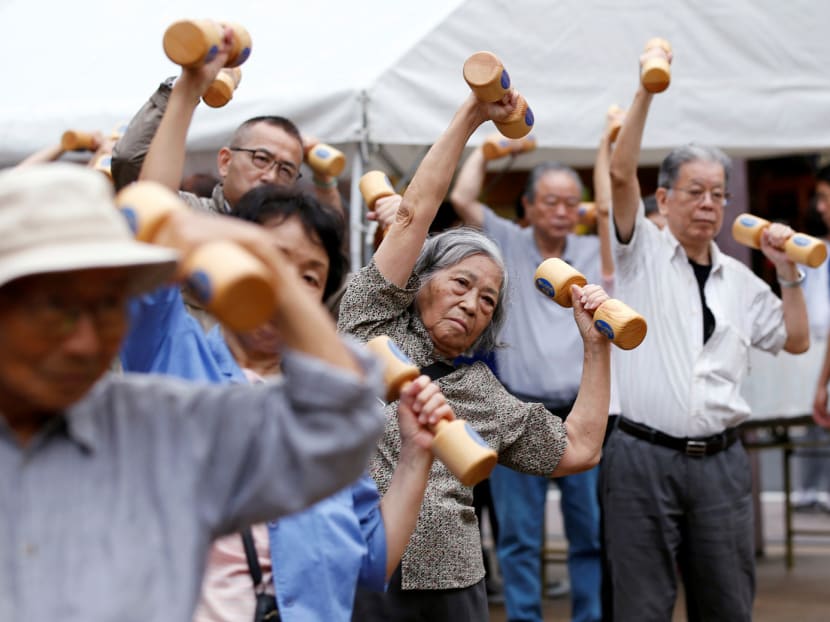Japan stems rate of population decline, but growing pension burden looms
TOKYO — Japan’s population will fall nearly a third by 2065, with almost 40 per cent aged 65 or older and the working population labouring under a tougher pension burden, although the pace of population decline has slowed slightly, a government agency said yesterday.

Elderly and middle-aged people exercising during a health promotion event to mark Japan’s Respect for the Aged Day in Tokyo’s Sugamo district. The pace of population decline has slowed slightly in Japan. Photo: Reuters
TOKYO — Japan’s population will fall nearly a third by 2065, with almost 40 per cent aged 65 or older and the working population labouring under a tougher pension burden, although the pace of population decline has slowed slightly, a government agency said yesterday.
Solutions to Japan’s population slide have eluded policymakers for decades, putting finances under growing pressure as demand for pensions surges.
In 2015, the government established a new Cabinet minister with the task of keeping the population from slipping below the demographic red line of 100 million by 2060.
A projection for 50 years, conducted once every five years by a branch of the Health Ministry, showed that the pace of population decline has slowed slightly from the last estimate in 2012, with the total set to fall below 100 million in 2053. Earlier, the population was expected to fall to less than 100 million by 2048.
Chief Cabinet Secretary Yoshihide Suga said the slower pace of population decline showed government policies were working.
“I am sure that the next five years will show even more of an impact,” Mr Suga told a news conference.
Prime Minister Shinzo Abe has said the ageing, shrinking population is not a burden but an incentive to boost productivity through innovations such as robots, wireless sensors and artificial intelligence.
People aged 65 or older are expected to make up 38.4 per cent of the population in 2065, with those 14 and under at 10.2 per cent.
In 2015, the base year for the survey, people aged 65 or older made up 26.6 per cent of the population, while those 14 or younger were at 12.5 per cent. The total population in 2065 will be 88.1 million, down from 127.1 million in 2015, a decline of 31 per cent.
In a particularly grim prediction, there will be only 1.2 working people to support every person over 65 by 2065 compared with 2.1 in 2015. This is down from 1.3 people in the previous projection.
About 100,000 people a year quit their jobs to care for an elderly or sick relative, according to government data published last year. The figure is set to expand dramatically as the 1946-1964 Baby Boomers move into the ranks of the elderly.
The projected fertility rate, the expected number of children born per woman during her child-bearing years, was revised upward slightly to 1.44 in 2065 from the 2012 estimate of 1.35 in 2060, according to the Health Ministry’s research body, the National Institute of Population and Security Research.
The Abe administration aims to lift the average number of births per woman to 1.8 from about 1.46 now in a bid to stabilise the shrinking population at 100 million over the next half century.
The fertility rate in the capital Tokyo is just 1.17 — a problem experts blame on factors including cramped housing, a lack of family support nearby and weaker expectations that young people will get married. AGENCIES






